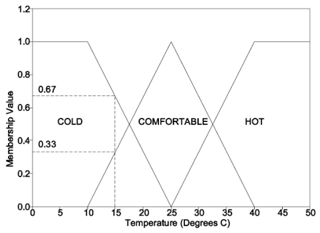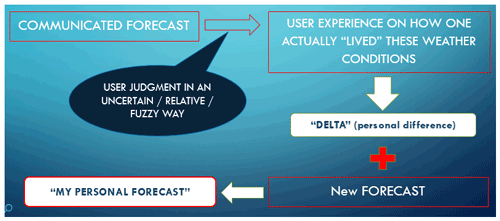“My personal forecast”: the digital transformation of the weather forecast communication using a fuzzy logic recommendation system
Communicating the scientific data of the weather forecasts to the general public has always been a challenge. Using computer graphics' visual representations to convey the message to average people has certainly helped a lot to popularize the weather forecast consumption by the general public. However, these representations are not information rich since they are abstractions; moreover they are not very actionable on the receiver side to help one decide how s/he will “live” the forecast weather conditions and prepare appropriately. Therefore, there is a need to personalize the forecast based on past experience of the individuals and their personal needs. The forecast has to become more human- and needs-oriented and more focused to the particular requirements of each individual person. We, thus, propose a new co-creation process in which the audience is called to provide a daily feedback on how they lived the weather conditions personally on a daily basis, so that, “my personal forecast” can be produced making the forecast more actionable on the user side. Preliminary such attempts focused solely on the “feels like” temperature forecasts. To arrive at the “my personal forecast”, artificial intelligence based recommender systems need to be applied, using fuzzy logic as the appropriate method for the user to express the individually perceived weather conditions.







